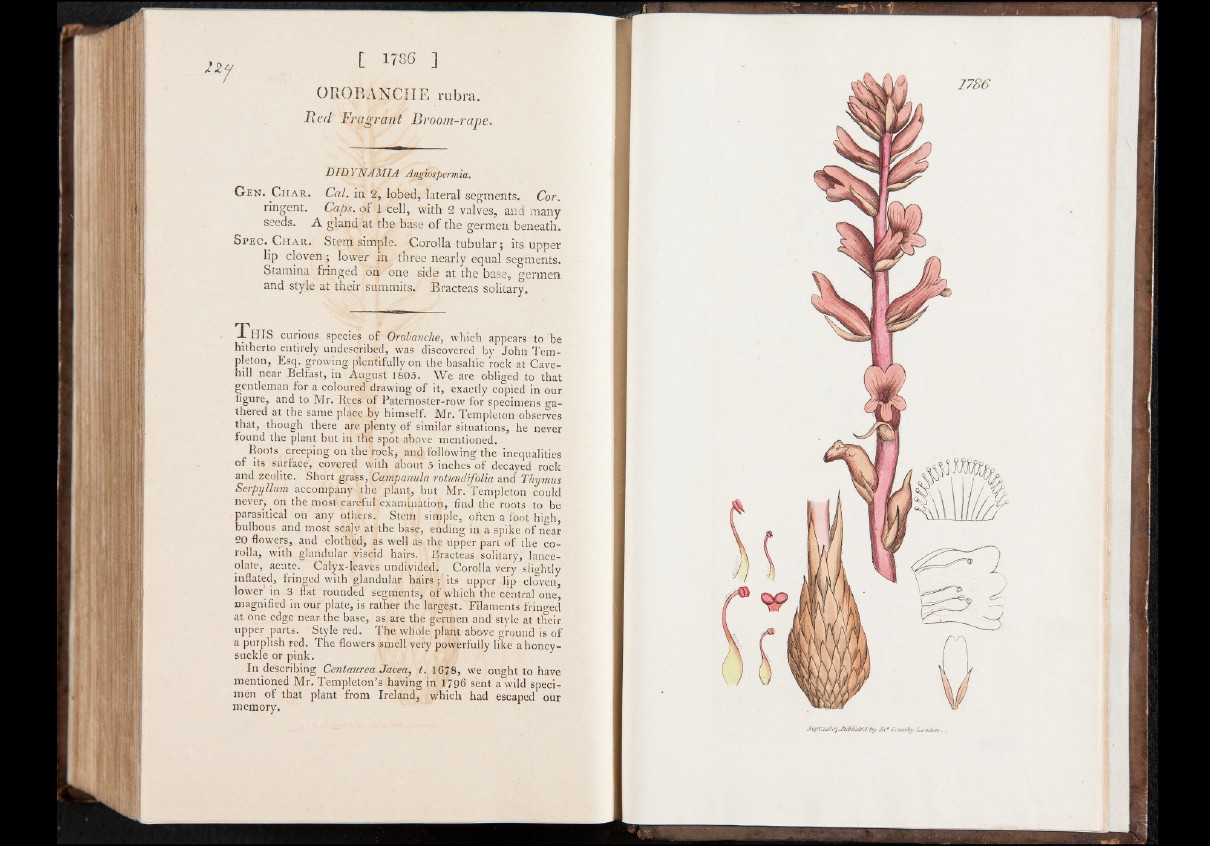
[ 1786 ]
OROBANCHE rubra.
Red Fragrant Broom-rape.
DIDYNAMIA Angiospermia,
Gen. Char. Cal. in 2, lobed, lateral segments. Cor.
ringent. Caps, o f 1 cell, with 2 valves, and many
seeds. A gland at the base of the germen beneath.
Spec. C h a r . Stem simple. Corolla tubular; its upper
lip cloven; lower in three nearly equal segments.
Stamina fringed on one side at the base, germen
and style at their summits. Bracteas solitary.
T h IS curious species of Orolanche, which appears to be
hitherto entirely undescribed, was discovered by John Templeton,
Esq. growing plentifully on the basaltic rock at Cave-
hill near Belfast, in August 1805. Wb are obliged to that
gentleman for a coloured drawing of it, exactly copied in our
figure, and to Mr. Rees of Paternoster-row for specimens gathered
at the same place by himself. Mr. Templeton observes
that, though there are plenty of similar situations, he never
found the plant but in the spot above mentioned.
Roots creeping on the rock, and following'the inequalities
of its surface, covered with about 5 inches of decayed rock
and zeolite. Short grass, Campanula rotundifolia. and Thymus
Serpyllum accompany the plant, but Mr. Templeton could
never, on the most careful examination, find the roots to be
parasitical on any others. Stem simple, often a foot high,
bulbous and most scaly at the base, ending in a spike of near
20 flowers, and clothed, as well as the upper part of the corolla,
with glandular viscid hairs. Bracteas solitary, lanceolate,
acute. Calyx-leaves undivided. Corolla very slightly
inflated, fringed with glandular hairs; its upper lip cloven,
lower in 3 flat rounded segments, of which the central one,
magnified in our plate, is rather the largegt. Filaments fringed
at one edge near the base, as are the germen and style at their
upper parts. Style red. The whole plant above ground is of
a purplish red. The flowers smell very powerfully like a honeysuckle
or pink.
In describing Centaurea Jacea, t. 1678, u'e ought to have
mentioned Mr. Templeton’ s having in 1796 sent a wild specimen
of that plant from Ireland, which had escaped our
memory.